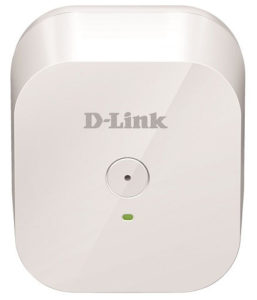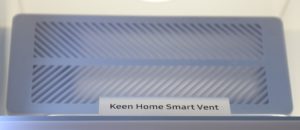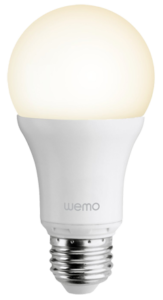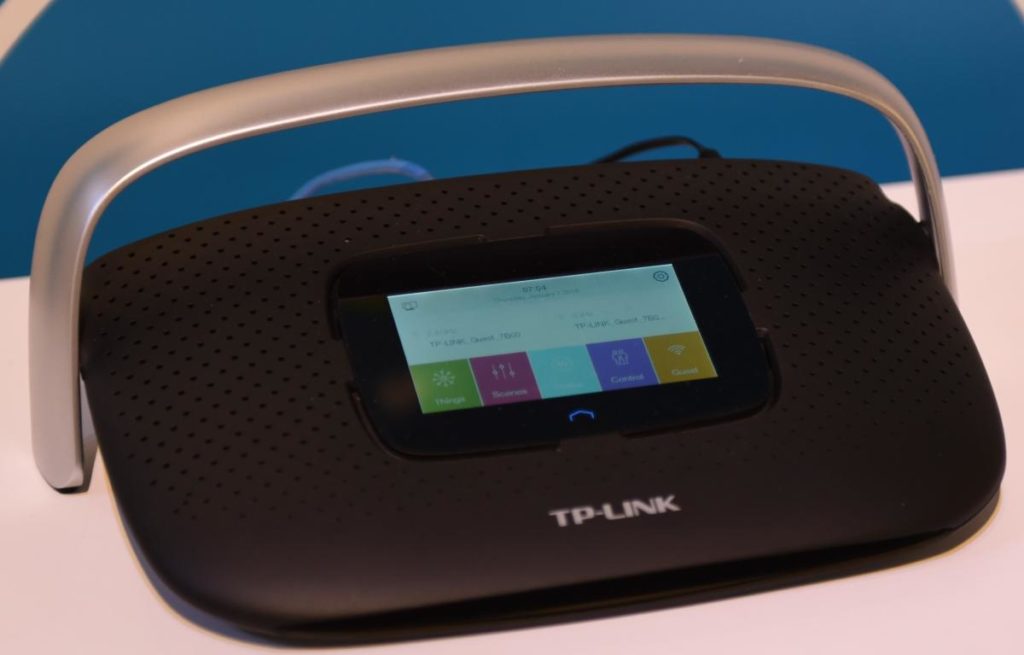In Search of the Really Smart Home
In our final article covering CES 2016, we’ve decided to take on what we see as the most vexing issue in technology today: bringing technology to the home. Yes, of course, we’ve had technology in the home for quite some time, but integrating the home with technology is something else all together. And while in the past it’s been referred to as Smart Home or the Connected Home, the catchphrase at CES 2016, seemed to be “The Internet of Things” (IoT). Yeah, OK. If we want people to actually adopt this stuff, maybe stick with something that doesn’t make it sound like the title of an esoteric Ph.D thesis…
So rather than dwell on what the pundits were saying during all of the IoT talks, we thought we’d deliver a few of our own observations. One thing is for sure: the days of the smartphone serving as the center of the Smart Home are numbered. While it made plenty of sense for early adopters to fiddle with their phones every time they wanted to impress their guests with light shows, locking doors, smart webcams, and other sorcery, for a home, and more importantly a family, it makes absolutely no sense. If little junior wants to lock the door and turn out the lights, he shouldn’t have to wait for dad to fish an iPhone out of his pocket.
And another truth is clear to us, even if it isn’t clear to all the Smart Home players out there: the industry has to consolidate. We saw row after row after row of Smart Home companies, peddling their wares as if the world depended on them, and that unfortunately led to utter boredom among showgoers, who were looking for the bigger picture, not the next “iSmartDevice.” Few people were visiting these displays, and to learn what the future of Smart Home technology has in store for us, we decided to venture away from the “Smart Home” section of the show to talk to the folks at the heart of it all, the networking companies.
Finally, for the Smart Home to work, there has to be money in it. Wink created an industry by selling a great product, the Wink Hub (the white monolith shown here), and losing money on every hub sold (pricing it at an absurdly-low $50). It then spent its advertising budget promoting all the third-party products that worked with the hub. Its Wink app is the gold standard for smartphone apps, and yet you don’t even need the Wink Hub to use it, and most products that “Work with Wink” don’t even require the user to spend a single penny on anything Wink has created. That, dear friends, was a recipe for a bankruptcy, and that’s exactly what Wink’s parent company Quirky found itself facing in late 2015.
By the way, we should note that one of the biggest names in Smart Home tech, Nest, which was purchased by Google in early 2014, didn’t actually have its own booth at CES (nor did Google, come to think of it!), but of course Nest’s name was plastered over just about everyone else’s Smart Home displays. Nest currently markets three of the top-selling Smart Home products, the Nest Thermostat, shown here in all its retro glory, the Nest Protect Smoke and Carbon Monoxide Alarm, and the Nest Cam. Our view is that Nest will prove to be what made Smart Home technology appealing to the average consumer, but won’t be what takes it to the next level of integration.
So let’s turn to some of the remaining players in the Smart Home field, all of which have enough of a track record to instill confidence in us that at least one of them will deliver the goods when it comes to the Smart Home.
D-Link
 The friendly folks at D-Link were kind enough to schedule a private meeting with us to show off their latest Smart Home technology. Being a router company first, and a home technology company second, D-Link is coming at this from a predictable angle. Their routers are the center of the system, and everything should be made to work with them. That means the communications standard is Wi-Fi, and for most applications, that makes a ton of sense.
The friendly folks at D-Link were kind enough to schedule a private meeting with us to show off their latest Smart Home technology. Being a router company first, and a home technology company second, D-Link is coming at this from a predictable angle. Their routers are the center of the system, and everything should be made to work with them. That means the communications standard is Wi-Fi, and for most applications, that makes a ton of sense.
D-Link makes the world’s best-selling webcams, and we won’t be surprised if they stay put at #1 with their latest effort, the 180-degree webcam. Sure, it’s fun to show off to your kids or the family dog how you can fool around with a smartphone to make a pan-and-tilt webcam pivot all around like everyone’s favorite droid. But the reality is that this is a complete gimmick, and a wider field of view is what people are really after. When it comes to the security of your home, motorized webcams will soon be a thing of the past. They just don’t make any sense at all. If there’s an intruder in your house, or your baby’s in trouble, the last thing you’ll want to be doing is goofing around with your smartphone trying to focus the camera in on the “action.”

D-Link’s camera of course uses Wi-Fi, all the better to communicate with its routers, but what about other home protection devices? It’s not in the business of competing with smoke alarm companies, be they old-timers like Kidde or newcomers like Nest Protect, so D-Link’s come up with a creative solution: the mydlink Smart Alarm. It’s a Wi-Fi based detector that monitors and identifies the sounds of standard UL-certified smoke or CO alarms. How’s that for ingenuity in the face of adversity? Now, one might argue that this is a significantly less elegant solution than installing a smart smoke detector, but given that everyone who’s been obeying the law for the past 50 years or so has a plethora of smoke alarms in their house already, doesn’t it make more sense to leverage their capabilities without needing to replace them all? We say yes it does! Then again, the mydlink Smart Alarm is relatively limited in what it can do: out of the box, it will just send push notices to your phone, which is a start, but it won’t put out a fire for you. With additional programming via If This Than That (IFTTT) code, it can be used to trigger other devices in a Smart Home network (we’d envision turning on the lights and unlocking the doors, for example).
By the way, we should note that D-Link actually does have a few of its own home security products on offer, including a Wi-Fi Siren and a Wi-Fi Motion Sensor. By incorporating the term Wi-Fi into the name of its products, D-Link is drawing a line in the sand, daring other companies to continue the push into competing standards like Z-Wave and Zigbee, and yes, even Bluetooth.
Samsung SmartThings
Samsung decided to enter the Smart Home arena the old-fashioned way: through a corporate takeover. SmartThings, based in Washington, D.C., was a darling of the Smart Home industry for the last couple of years, going head-to-head with nearly-defunct Wink in the race to win the hearts and minds of tech lovers everywhere. Samsung bought SmartThings for the paltry sum of $200 million in August 2014, seeing more potential in the company than anyone else had, apparently.
And Samsung’s big move at CES was to integrate the SmartThings hub into all of its high-end HDTVs for 2016 (which have yet to hit the market). Samsung sees the TV as the center of the Smart Home, and in some ways, that makes sense. Nearly everyone has a TV, and the emergence of the TV as an interactive tool, rather than just a passive source of media content, has been a long time coming. But ultimately, we believe this approach is just too clunky. Having to turn on the TV to turn on the lights or lock the doors just doesn’t make that much sense to us, but maybe we’re missing something.
 As an aside, the most innovative thing on display at Samsung’s SmartThings booth was a product that wasn’t even Samsung’s: the Keen Smart Vent. This connected floor vent will allow homeowners to not just monitor the temperature in one room or even many rooms, but to control the temperature in all of those rooms.
As an aside, the most innovative thing on display at Samsung’s SmartThings booth was a product that wasn’t even Samsung’s: the Keen Smart Vent. This connected floor vent will allow homeowners to not just monitor the temperature in one room or even many rooms, but to control the temperature in all of those rooms.
Now that’s a cool (or hot!) idea!
Belkin WEMO
 Belkin, which owns Smart Home brand WEMO and networking brand Linksys, has a unique position in the Smart Home space. It has the in-house know-how to create awesomely-powerful wireless networking equipment, but it’s also been a pioneer in significantly less powerful, but perhaps just as impressive networked devices. We spent our time with the WEMO representatives, because of the way Belkin has split out its brands. Linksys isn’t doing anything in the Smart Home space, as far as we can tell.
Belkin, which owns Smart Home brand WEMO and networking brand Linksys, has a unique position in the Smart Home space. It has the in-house know-how to create awesomely-powerful wireless networking equipment, but it’s also been a pioneer in significantly less powerful, but perhaps just as impressive networked devices. We spent our time with the WEMO representatives, because of the way Belkin has split out its brands. Linksys isn’t doing anything in the Smart Home space, as far as we can tell.
While WEMO got its start with connected lights that used a “WEMO hub,” the WEMO folks made it clear that this represents a first-stage version of the Smart Home, and that hubs will not be part of the second stage. As they explained, the only reason WEMO ever used a hub was because it was impossible to integrate WiFi directly into bulbs for thermal reasons, and so a lower-powered standard was required. That’s where the WEMO hub came into play, serving as a bridge between the non-WiFi bulbs and a WiFi router.
Belkin wasn’t actually showing off any new gear, not publicly at least, but it was promising big new things for 2016. That sounds like a work in progress to us, but what Belkin made clear was that designing the next “Touchpoint” was where it’s at in the Smart Home arena. People need a way to interact with their homes, not just program lights to turn on and off, which Belkin now views as the “low-hanging fruit” of the Smart Home world. The WEMO pont of view is that consumers are waiting for an implementation of Smart Home technology that makes their lives easier and better, and while automated lights were a start, they were just the beginning of the revolution. As Belkin stated to us, they don’t want to be in the business of selling lightbulbs, so our money’s on WEMO abandoning its iconic lightbulb line and exiting the smart lighting market altogether to focus on other products.
TP-Link
TP-Link is a feisty competitor in the home networking arena, but they were the first to admit that they’re not the biggest dog in the fight. It was surprising to hear TP-Link’s representatives acknowledge this, because in truth TP-Link makes some incredibly-impressive gear. They are among the only vendors of high-end PCIe-based networking equipment, and they were also the first networking company to announced an 802.11ad router at CES 2016, based on Qualcomm’s cutting-edge chipset.
 So it came as no surprise to us, even if TP-Link was a bit bashful about it, that the company has come up with what we think is an incredibly-obvious solution to the Smart Home dilemma, that for some reason has taken years to discover: a smart home router. All this time, we’ve been hanging silly hubs off of the back of our routers, or perhaps set up separate hubs that communicate wirelessly with the router, when all along the router was the key, and all we had to do was open our eyes to it. So TP-Link has taken one of its established router platforms and equipped it with a multitude of enhancements that makes it unlike anything we’ve ever seen. The prototype shown here, sporting multiple internal radios that speak nearly all the common home networking languages, along with a touchscreen interface to allow you to control all of your smart do-dads, would become both the nerve center of the connected home. To borrow Belkin’s language, this router would be the “touchpoint.” It’s a great idea, but it may be just a little too late to turn the Smart Home tide.
So it came as no surprise to us, even if TP-Link was a bit bashful about it, that the company has come up with what we think is an incredibly-obvious solution to the Smart Home dilemma, that for some reason has taken years to discover: a smart home router. All this time, we’ve been hanging silly hubs off of the back of our routers, or perhaps set up separate hubs that communicate wirelessly with the router, when all along the router was the key, and all we had to do was open our eyes to it. So TP-Link has taken one of its established router platforms and equipped it with a multitude of enhancements that makes it unlike anything we’ve ever seen. The prototype shown here, sporting multiple internal radios that speak nearly all the common home networking languages, along with a touchscreen interface to allow you to control all of your smart do-dads, would become both the nerve center of the connected home. To borrow Belkin’s language, this router would be the “touchpoint.” It’s a great idea, but it may be just a little too late to turn the Smart Home tide.
Where the Smart Home is Going…
So what did we learn in our quest to find the Really Smart Home? Well, it makes plenty of sense to us that companies like D-Link, Samsung, Belkin, and TP-Link will be leading the way to the second generation of Smart Home products, as pioneers like TCP, Wink, and yes, maybe even Nest fall by the wayside, piling up on the clearance rack at the local Home Depot (we’ve actually seen some of this happening already). What people have been in search of was not ever-greater complexity and needlessly competing standards, but a unified system that would make their adoption of the Smart Home a simple affair. If the goal was to make our lives easier, Smart Home Version One didn’t quite cut the mustard.
In the end, four of the world’s biggest home technology companies showed us four different paths to the next generation of the Smart Home: D-Link believe all devices will communicate with existing routers, Samsung thinks the future is in the TV, TP-Link believes all devices will communicate with a next-gen integrated router, and Belkin WEMO believes that the notion of a smart home hub has to be cast aside, with a focus on putting control of the home back in the hands of the home’s inhabitants. From Belkin’s point of view, the next killer app won’t be on a smartphone, or even on a router, but in something else all together, although Belkin wasn’t ready to tell us what that something is!
One last thing we should mention: although Amazon wasn’t at the show, one of its products was talked up at every Smart Home display: the Amazon Echo. From Belkin to Samsung, each company referred to the Echo as a game-changer, allowing users to interact with their Smart devices using only their voice. In hindsight, this was an obvious step in the development of the Smart Home, but it seems Amazon practically stumbled upon it. From here on out, we expect just about every Smart Home product to exclaim “Works with Echo”!
